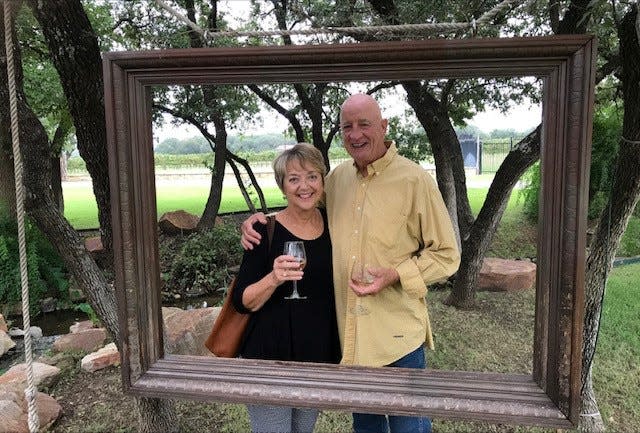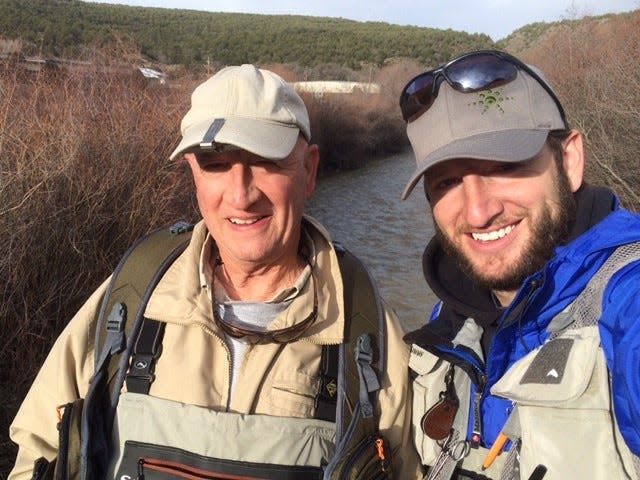'Continual feedback': How a tiny device is helping keep tabs on some Austin-area heart patients

Last year during the holidays, R.G. Carver was using a string trimmer to knock down some weeds in his yard when he got into some cactus and got a few needles stuck in his leg. After a few days, his legs were swelling up.
He traveled from his home in Double Horn near Spicewood to Baylor Scott & White Medical Center in Marble Falls.
There medical personnel found his pulse was racing. He had an electrocardiogram done on his heart for the first time. The cactus needles weren't the cause of the leg swelling. It was his heart.
Carver spent five days in the hospital getting the fluid out of his heart and the rest of his body.
Training doctors: Austin becomes global draw for doctors learning about heart arrhythmia
In January, he had a procedure to get his heart back in the correct rhythm, and he began taking medication to regulate his heart. But he needed regular monitoring, which meant a trip every few days to Marble Falls to check in with his cardiologist, Dr. Justin Coyle.
Then Coyle recommended that Carver get a CardioMEMS. The device from Abbott Laboratories, which has some of its heart device business based in Austin, measures the pressure in the pulmonary artery in people with chronic heart failure. It's the size of a paper clip and is inserted by a catheter from the femoral vein in the leg to the pulmonary artery.

The procedure takes about 45 minutes. Patients can't feel the CardioMEMS in their body. Typically, they might just be sore for a few days in their groin where the catheter was inserted.
Until February, the CardioMEMS was approved only for people with chronic heart failure who have been hospitalized for it and experience symptoms such as shortness of breath when moving but not when sitting. Those patients have Class III chronic heart failure.
After a study of 1,000 people who did not fit those criteria, who had never been hospitalized, who did not have as severe symptoms, or who had worse symptoms, the U.S. Food and Drug Administration expanded the use of the CardioMEMS for the less severe patients, Class II, and people who have increased levels of natriuretic peptides, which indicate their heart disease is getting worse.
MEMS stands for micro electro mechanical system. Once the device is inserted, the patient rests once a day on a mat that picks up radio signals from an antenna in the CardioMEMS. Using a hand-held device, the person then sends the pressure readings to the doctor.
The patient just has to make sure that there isn't any interference between the MEMS and the transmitter. Sometimes beds with a lot of metal or a nearby Wi-Fi router can cause interference. A patient just has to find an alternative location.
Those daily pressure readings allow the person's cardiologist to determine whether medication should be adjusted before the person gets sick enough to feel increased symptoms and need hospitalization. A buildup of fluid that causes symptoms could take weeks to develop.
Heart stories: St. David's helps prevent Austin man's heart attack story from being a tragedy
For patients whom Coyle has fitted with the CardioMEMS, he's been able to see trends in pressure rates and adjust medication. If there is a worrisome reading, Coyle or a nurse will ask about symptoms and blood pressure to troubleshoot what is causing the change in pressure.
"The people I try to target are those who are very symptomatic. They have a lot of fluctuation in their fluid status; they're constantly walking the fine line of needing high doses or constantly needing a change of doses," Coyle said. "This takes the guesswork out of it. There's more continual feedback. We have a better sense of where the (fluid) volume is."
It won't work for people who aren't consistent with their care, Coyle said. If they don't take their medication regularly or if they miss doctor's appointments, the CardioMEMS isn't for them.
"It takes a person who is highly motivated," Coyle said. "It has to become part of their daily routine: I get on the scale and check my weight. I check my blood pressure. I do my CardioMEMS."

Now, every morning, Carver lies on the mat, which he describes as a pillow with a hard frame and a pad on top of it. He pushes the button and stays still on the mat for 10 seconds. Then he leaves it plugged in while it sends his reading to Coyle's office in Marble Falls. He makes his breakfast and then unplugs it.
"If there's a problem, somebody will call me," he said.
Most of the time, no one calls him, but when he traveled to Colorado and took the mat with him, he got a call. The high altitude had affected his heart and the pressure in his pulmonary artery.
"They read them every morning," he said. "I'm impressed."
If the readings do change, Coyle can adjust Carver's medications before it becomes a situation in which Carver would need to be hospitalized.
Now that Carver is well-regulated with medication, he realizes just how sick he previously was. The former baseball coach and player said he felt tired and irritable.
"I felt run down and felt like something wasn't quite right," he said. "When I would start exercising, I noticed I couldn't get my breath. The harder I exercised, the worse it became. I couldn't put my finger on it."
He now knows his heart wasn't keeping up with all the fluids, and it was having to work overtime.
Now, Carver is able to walk 2 miles every morning. He mows his lawn, and he's staining his deck.
Heart risks: How having the flu could damage your heart, increase risk for attack or disease
This article originally appeared on Austin American-Statesman: How Abbott's CardioMEMS helps this Texas man with heart failure

